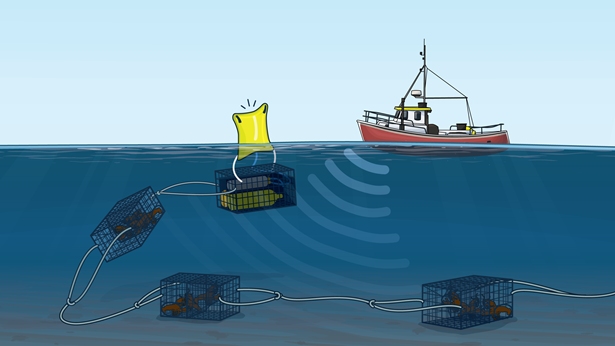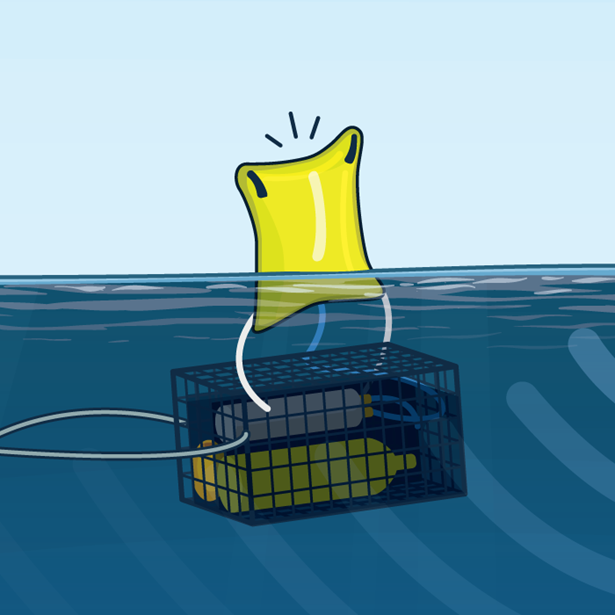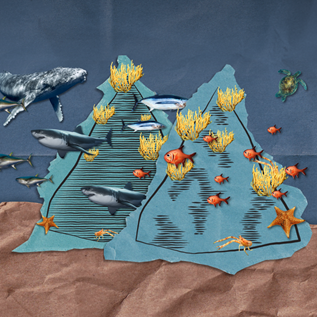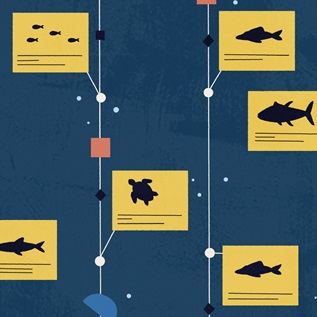Ropeless Fishing Systems Hold Promise for Fishermen—and Whales
More investment and collaboration needed to expand use and reduce entanglements
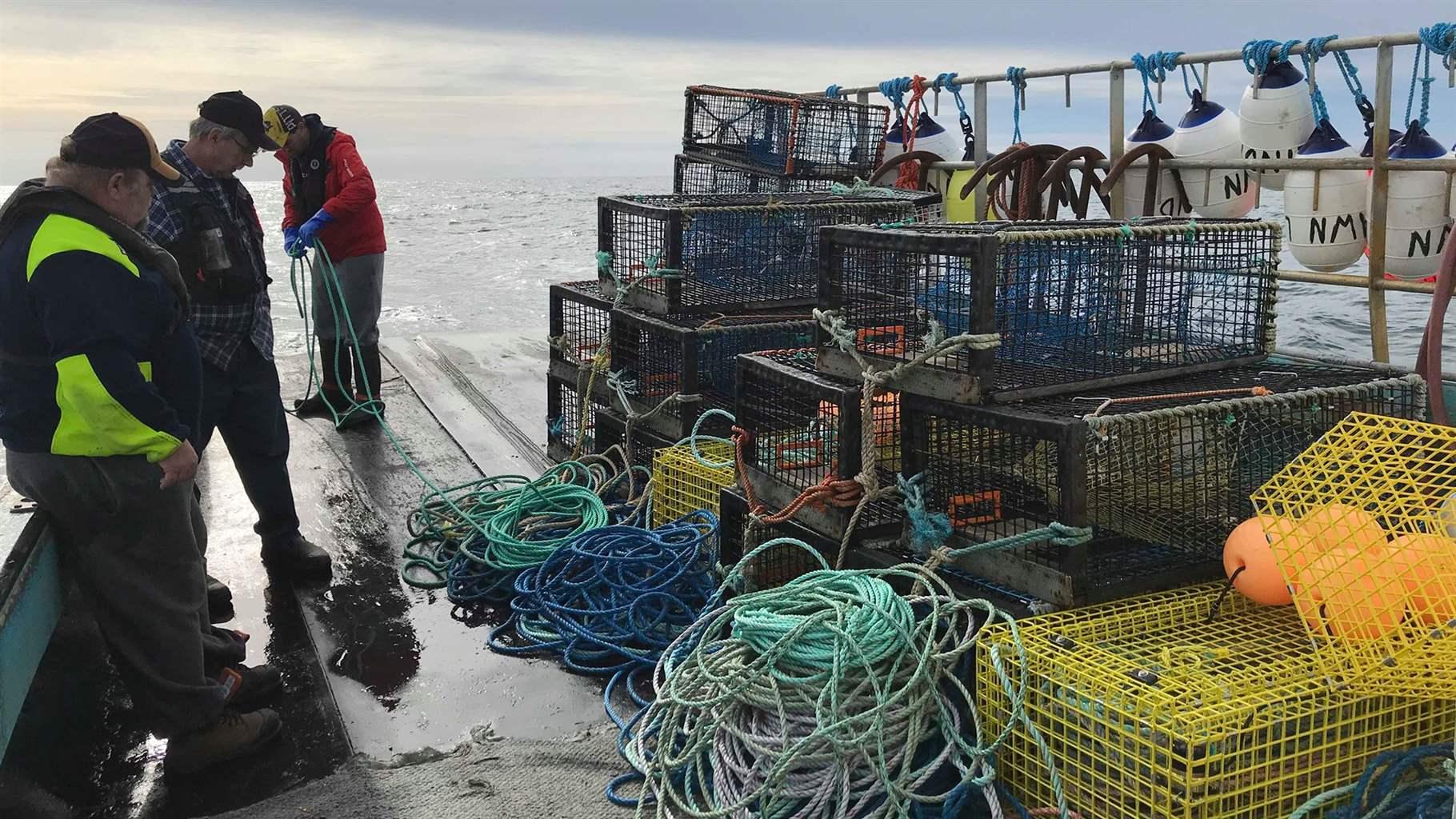
In lobster and crab fisheries, vertical lines that connect traps or pots on the seafloor to buoys at the water’s surface pose a threat of entanglement and death for marine mammals—which in Atlantic Canada and New England include the critically endangered North Atlantic right whale. A new method, called ropeless (or buoyless) fishing, allows fishermen to signal their gear to surface with fewer or even no vertical lines by using a transducer to acoustically trigger the release of a stowed rope and buoy—or a lift bag—from a trap or pot on the seafloor that brings the gear to the surface.
In a promising development, fishermen in the waters off Massachusetts and New Brunswick, Canada, have successfully fished for lobster and crab using ropeless systems. Although no single solution will immediately eliminate risk to whales and other marine mammals as fishing continues, a concerted effort to expand research and collaboration could allow ropeless fishing to become an effective and safe way to fish.
The technologies could reduce conflicts among fishermen over gear placement, help fishermen locate lost gear and catch, and allow fishing in areas that are closed to vertical lines. In addition to helping fishermen and marine mammals, an increased use of ropeless systems could also benefit marine and environmental law enforcement agencies and regulators by supplementing state and federal data collection and enabling rapid, remote verification of trap information.
Although ropeless fishing technologies have been advancing, operational and cultural challenges to wider adoption of these systems remain. For the systems to become fully functional and effective in crab and lobster fleets, collaboration among multiple stakeholders—and government and industry investment in the technologies—must be accelerated and expanded.
One obstacle to ropeless fishing systems becoming economically and operationally feasible is gear location marking, or determining the position of gear on the seafloor. Four methods currently exist to mark gear location, and users of one method can’t always “see” gear that’s marked by another method. For ropeless systems to become more widespread, fishermen, enforcers, and regulators, with input from scientists, conservationists, gear manufacturers, engineers, and other interested stakeholders, should work together to identify—and agree to use—the best method of marking gear location. Once that standardization happens, all commercial fishermen, regardless of what species they’re targeting and whether they’re using fixed gear or mobile gear such as trawlers, will be able to detect any ropeless systems on the seafloor.
To help advance the effort to find a feasible and cost-effective gear-marking solution, the Woods Hole Oceanographic Institution, Canadian Wildlife Federation, and The Pew Charitable Trusts are engaged in conversations with industry, enforcement, regulators, and others in the U.S. and Canada—which will culminate in a virtual workshop on gear marking in the coming months. We expect the outcomes of the workshop will help inform commercial research and development of ropeless systems.
Another obstacle to widespread adoption of the technology: affordability. The prototype ropeless systems now in use are expensive; for them to become affordable and widely used, the U.S. and Canadian governments must take a leadership role in moving technologies through the next phase of development.
At the same time, policymakers in both countries should close areas where there’s a high risk for right whale entanglement to fixed-line gear—but leave them open to ropeless fishing. This would not only relieve pressure on the right whale population but would also help foster a market for ropeless technologies by creating an incentive for fishermen to try them. And that could spur commercial investment and high-volume production, which would then drive down costs.
Ropeless fishing systems are an opportunity for lobster and crab fishermen to continue operating in areas where right whales are present without further endangering these marine mammals. Investment in ropeless fishing now could lead to a future in which the lobster and crab industries use a mix of traditional and ropeless gear to sustain their economically and culturally valuable industry, leverage technology to collect important data, and protect whales.
Peter Baker is the director of The Pew Charitable Trusts’ ocean conservation work in Canada and New England and Leah Baumwell is a senior associate with Pew’s campaign to protect Atlantic Ocean marine life off the U.S. and Canada.
This analysis was updated on October 22, 2020, because an earlier version misidentified the ropeless gear triggering device as a transponder. The correct term is transducer.

